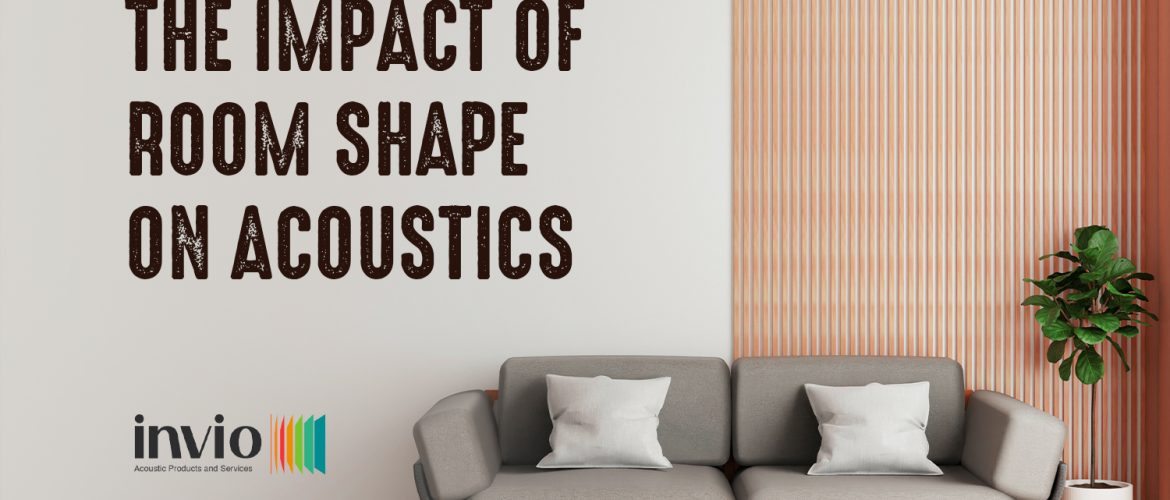When it comes to creating an acoustically pleasing environment, the shape of a room plays a pivotal role. Sound is a complex wave that reacts differently based on the contours it encounters. In this exploration, we delve into the fascinating relationship between room shape and acoustics, unraveling the science behind how the structure of a space can either enhance or hinder the auditory experience.
The Basics: How Sound Behaves in Spaces
Before we plunge into the specifics, it’s essential to grasp the fundamentals of how sound behaves in different environments. Sound travels in waves, bouncing off surfaces it encounters. The way these waves interact with walls, ceilings, and floors greatly influences the overall acoustic quality of a room.
Room Shapes and Resonance: The Dance of Sound Waves
Rectangular Rooms: The Double-Edged SwordRectangular rooms are the most common architectural configuration. While they offer simplicity in design, they also present challenges in terms of standing waves. These waves can bounce back and forth between parallel walls, creating areas of reinforced sound (peaks) and weakened sound (nulls).
-Tip for Rectangular Rooms: Introduce diffusers and absorbers strategically to break up standing waves and achieve a more balanced sound distribution.
Curved Spaces: Embracing Harmonious FlowCurved or irregularly shaped rooms can be more acoustically forgiving. The absence of parallel surfaces reduces the likelihood of standing waves, leading to a more even distribution of sound throughout the space.
-Advantage of Curved Spaces: Consider incorporating curved elements into your design to minimize the impact of standing waves and enhance overall acoustic quality.
The Impact of Ceiling Height: A Vertical Symphony
Ceiling height is another dimension to consider in the quest for optimal acoustics. Taller ceilings can contribute to a more open and spacious feel, but they also affect the way sound interacts with the room.
High Ceilings: Grandeur and Reverberation High ceilings evoke a sense of grandeur, but they can also lead to increased reverberation. The additional vertical space allows sound waves to travel longer distances before reaching a reflective surface, resulting in a more prolonged decay time.
-Solution for High Ceilings: Implementing acoustic clouds or baffles can help mitigate excessive reverberation and create a balanced sonic environment.
Low Ceilings: Intimacy and Absorption Low ceilings, on the other hand, can create a more intimate atmosphere but may suffer from a lack of natural sound diffusion. In such spaces, sound is more likely to be absorbed by the floor and furnishings, potentially leading to a dull or muted acoustic environment.
-Enhancement for Low Ceilings: Use acoustic panels strategically to enhance diffusion and prevent excessive sound absorption.
The Role of Room Materials: From Echoes to Elegance
The materials used in a room, from walls to floors, contribute significantly to its acoustic characteristics. The right materials can enhance sound quality, while poor choices may result in unwanted echoes or a muffled ambiance.
Hard Surfaces: Echoes and Reflections Rooms with predominantly hard surfaces, such as marble or hardwood floors, may suffer from excessive echoes and reflections. While these surfaces can add elegance, they can also create a harsh sonic environment.
-Softening Hard Surfaces: Integrate area rugs, curtains, or wall coverings to introduce soft materials that absorb and diffuse sound.
Soft Surfaces: Creating a Warm Acoustic Embrace Conversely, rooms with soft surfaces, like plush carpets and upholstered furniture, tend to absorb more sound. While this can contribute to a warm and comfortable atmosphere, it may also lead to a lack of clarity and definition in the sound.
-Balancing Soft Surfaces: Strike a balance by incorporating a mix of soft and hard surfaces to achieve a harmonious blend of absorption and reflection.
Customizing Acoustics: Tailoring the Sound Experience
Understanding the impact of room shape on acoustics provides a foundation for crafting a customized sonic experience. Here are some additional considerations for tailoring acoustics to specific needs:
Multipurpose Spaces: Adapting to Varied Needs Rooms that serve multiple functions, such as home theaters or living rooms, require versatile acoustics. Consider adjustable acoustic panels or curtains that can be manipulated to suit different activities.
Recording Studios: Precision in Sound Control Recording studios demand precise control over sound. In these spaces, a combination of diffusers, bass traps, and absorbers is often employed to create an environment conducive to accurate audio capture.
Open Concept Design: Challenges and Solutions Open concept designs have gained popularity, but they pose challenges in terms of sound isolation. Utilize furniture, room dividers, or strategically placed acoustic elements to create designated acoustic zones within the open space.
Orchestrating Sonic Excellence
In the symphony of architectural design, the shape of a room emerges as a conductor shaping the auditory experience. From the choice of materials to the arrangement of surfaces, each element plays a crucial role in determining whether a space resonates with harmonious clarity or echoes with dissonance.
By understanding the impact of room shape on acoustics, designers, architects, and enthusiasts alike can embark on a journey to craft environments that not only please the eye but also soothe the soul with a symphony of sound. Whether designing a home, office, or entertainment space, the marriage of form and function in the realm of acoustics opens the door to a world where every room becomes a unique and harmonious composition.

